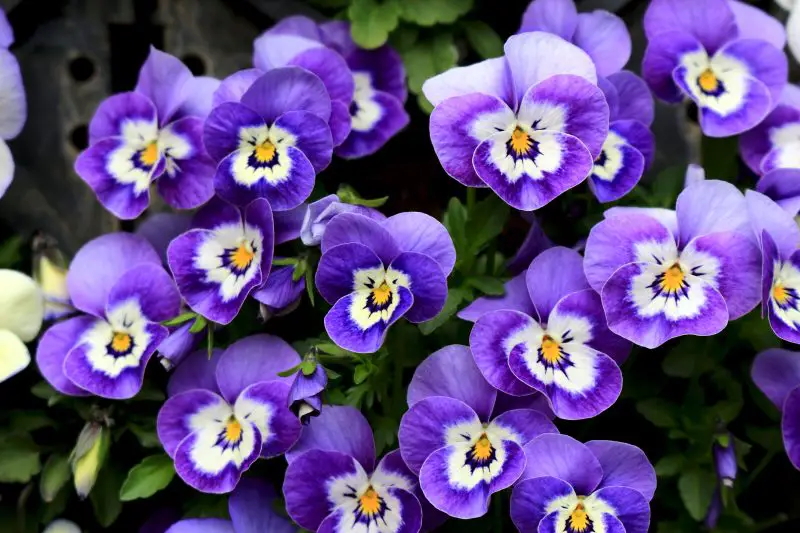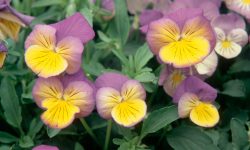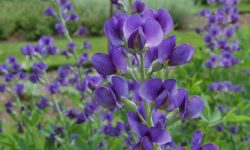Pansies are charming garden flowers celebrated for their vibrant colors and intricate patterns. They thrive in cool conditions, making them perfect for early spring and late fall gardens. Unlike many perennials, pansies have a shorter lifecycle, yet their blooms provide striking beauty when carefully planted and maintained. Their versatility allows them to flourish in containers, borders, or garden beds, brightening any outdoor space with long-lasting color.
Blooming patterns in pansies are influenced by temperature, sunlight, and soil quality. Cool weather encourages abundant flowering, while heat can shorten their display. Regular maintenance, such as deadheading spent blooms, extends their flowering season. By understanding these patterns and selecting the right varieties, gardeners can enjoy vibrant, continuous color for weeks. Planning around local climate ensures pansies reach peak bloom and create eye-catching landscapes throughout the growing season.
Understanding the Pansy Blooming Cycle

Pansies have a unique blooming cycle influenced by environmental conditions. Their flowers respond quickly to changes in temperature and daylight. In cooler climates, pansies often bloom in early spring and again in fall. Each flower can last several weeks, while the plant continuously produces new blooms when properly cared for. This cyclical pattern allows gardeners to enjoy extended periods of color throughout the growing season. Additionally, flower production can be affected by pruning, disease control, and pest management. Regular attention ensures the plant remains healthy and flowers consistently.
Temperature plays a crucial role in bloom intensity and duration. Pansies thrive in cool weather and may struggle under high heat. When temperatures rise, flowering slows, and blooms may fade faster. Conversely, mild conditions promote robust flower production and vibrant color. Gardeners can manipulate bloom timing by planting in shaded areas during hot months or choosing heat-tolerant varieties. Strategic planting in early spring or late summer helps maximize display. Understanding how seasonal shifts impact growth allows gardeners to plan for continuous visual interest in flower beds and containers.
Light and soil quality further influence pansy growth and blooming. Adequate sunlight, typically four to six hours daily, encourages strong stems and abundant flowers. Well-draining, fertile soil provides essential nutrients to sustain continuous blooms. Consistent watering and occasional fertilization support plant health and flowering potential. Observing how plants respond to seasonal cycles, soil amendments, and maintenance practices ensures peak bloom performance. By understanding the blooming cycle in detail, gardeners can plan plantings strategically, ensuring pansies reach their peak display when desired and maintain long-lasting, colorful gardens throughout the season.
Peak Bloom Seasons for Pansies
Pansies reach their most vibrant displays during specific seasons depending on climate. In temperate regions, early spring offers ideal conditions for planting. Cool temperatures and consistent moisture encourage strong root development and abundant blooms. Gardeners often plant pansies as soon as the soil can be worked to capture this early flowering period. Spring blooms typically last several weeks, adding color to landscapes while other plants are just emerging from dormancy. This season highlights the flower’s rich colors and intricate patterns, making gardens visually appealing.
Fall is another prime season for pansy flowering in many areas. Planting in late summer or early fall allows flowers to establish before cooler temperatures arrive. Pansies thrive in mild autumn weather, producing vivid blooms that can withstand light frosts. Seasonal conditions slow down growth slightly, extending the flowering period. By understanding these peak seasons, gardeners can plan staggered plantings to maintain continuous color. Proper care, including regular watering and fertilization, ensures that pansies remain healthy and bloom fully throughout fall and into early winter in some climates.
Climate variations influence the exact timing of peak blooms. In warmer regions, pansies may bloom in winter when cooler temperatures prevail. Conversely, hot summers can reduce flowering, requiring gardeners to plant in shaded or protected areas. Soil preparation, sunlight exposure, and microclimate considerations further affect bloom success. Observing local conditions allows for accurate planning and optimal timing. By planting strategically and understanding seasonal patterns, gardeners can enjoy pansies at their fullest, creating vibrant, long-lasting displays that enhance any garden from spring through fall.
Factors Affecting Pansy Flowering
Temperature and Its Impact on Pansy Blooming
Temperature is a critical factor in pansy flowering. Pansies thrive in cool conditions, with ideal daytime temperatures between 45 and 65 degrees Fahrenheit. Extreme heat can cause flowers to fade quickly, shortening the blooming period. Conversely, mild temperatures encourage longer flower production and maintain vibrant colors. Gardeners must monitor seasonal temperature changes and plan planting times carefully to ensure optimal bloom. Understanding local climate patterns allows for more accurate predictions of peak flowering periods.
Cool weather not only encourages flowering but also strengthens plant resilience. Pansies exposed to moderate temperatures develop more robust stems and fuller blooms. Sudden heat waves or unexpected frost can damage flowers or stunt growth, so protective measures may be necessary. Adjusting plant location, using shade cloths, or selecting heat-tolerant varieties helps mitigate temperature stress. By managing temperature effectively, gardeners can enjoy a longer, more consistent display of pansy blooms throughout the growing season.
Soil Quality and Nutrient Management
Healthy soil is essential for sustaining pansy flowering. Pansies perform best in well-draining soil enriched with organic matter. Fertile soil supports strong root systems, which are necessary for producing multiple bloom cycles. Poor or compacted soils may stunt growth, reduce flower size, or cause sparse flowering. Gardeners should amend soil with compost, peat moss, or well-rotted manure and ensure proper aeration to maintain ideal conditions. Maintaining soil pH between 6.0 and 6.5 improves nutrient availability, directly impacting bloom health and color intensity.
Nutrient management also affects bloom quality. Regular feeding with a balanced fertilizer promotes vibrant flower colors and encourages continuous flowering. Over-fertilization should be avoided, as it can lead to excessive leaf growth at the expense of blooms. Alongside proper watering practices, good nutrition ensures healthy foliage, strong stems, and long-lasting flowers. Gardeners can also apply slow-release fertilizers to maintain steady nutrient levels. By addressing soil structure and nutrient needs, pansies achieve maximum bloom potential, ensuring a continuous and visually stunning display throughout the season.
Light and Water Considerations
Adequate sunlight is essential for pansy growth and flower production. Pansies typically require four to six hours of direct sunlight daily. Insufficient light results in leggy plants with fewer blooms, while excessive sun in hot climates may cause stress and early flower fading. Choosing the right planting location, such as a spot with morning sun and afternoon shade, helps maintain healthy stems and vibrant flowers. Monitoring seasonal light changes allows gardeners to adjust care routines to optimize flowering throughout the year.
Water management is equally important for pansy health. Pansies need consistent moisture to sustain blooms, but overwatering can cause root rot, and drought stress reduces flower quality. Deep, moderate watering encourages strong root development and continuous flowering. Mulching around plants helps retain soil moisture and regulate temperature. Observing plant responses to water and light conditions allows gardeners to anticipate issues and adjust care practices. When light and water are properly managed, pansies flourish, producing long-lasting, eye-catching displays that enhance any garden landscape.
Extending the Pansy Blooming Season
Extending the pansy blooming season requires careful planning and consistent care throughout the growing period. Choosing the right planting time is crucial. In cooler regions, early spring or late summer plantings ensure flowers appear during ideal conditions. In warmer climates, fall or winter plantings allow blooms to thrive when temperatures are mild. Understanding local climate patterns helps gardeners predict peak bloom periods and plan for continuous color in landscapes. By staggering plantings, multiple bloom cycles can be achieved, keeping gardens vibrant for months.
Regular maintenance also extends flowering. Deadheading spent blooms encourages the plant to produce new flowers instead of setting seeds. Removing damaged or yellowing leaves improves airflow and reduces disease risk, supporting longer bloom periods. Fertilizing with a balanced, slow-release fertilizer every few weeks provides essential nutrients for sustained flower production. Consistent watering, ensuring soil remains moist but not waterlogged, is critical to maintaining healthy, vigorous plants. Monitoring for pests and diseases further protects blooms from premature decline.
Microclimate adjustments can enhance flower longevity. Planting pansies in partially shaded areas protects them from intense afternoon sun in hot climates, preventing heat stress and fading. Mulching around the base regulates soil temperature, retains moisture, and suppresses weeds that compete for nutrients. By combining strategic planting, careful maintenance, and environmental adjustments, gardeners can maximize bloom duration. When these practices are applied, pansies provide continuous, colorful displays that brighten gardens for an extended season, offering long-lasting beauty and visual appeal.
Choosing the Best Pansy Varieties for Continuous Blooms
Selecting the right pansy varieties is essential for maintaining continuous blooms throughout the growing season. Different cultivars vary in bloom timing, flower size, and color patterns. Some varieties are bred for extended flowering and heat tolerance, while others thrive in cool spring or fall conditions. By combining early, mid, and late-blooming types, gardeners can enjoy vibrant displays from early spring to late fall. Understanding growth habits and climate suitability ensures plants perform well in local conditions and maintain a steady bloom. Proper variety selection minimizes gaps in flowering and supports a visually appealing garden throughout the season.
Color and form choices further influence bloom continuity and visual impact. Bright, contrasting colors and multicolored varieties create dynamic displays that remain attractive as flowers fade. Heirloom pansies often feature unique patterns but may have shorter bloom periods. Modern hybrid varieties are engineered for longer-lasting flowers, disease resistance, and weather tolerance. Incorporating a combination of types allows gardeners to balance aesthetic appeal with durability. Selecting varieties that naturally bloom at slightly different times ensures overlapping flowering, producing continuous color even in variable seasonal conditions.
Complementing variety selection with appropriate care maximizes flowering potential. Regular deadheading prevents seed formation and encourages the plant to produce fresh blooms continuously. Fertilization with balanced nutrients and consistent watering supports vigorous growth and vibrant flowers. Choosing varieties with known resilience to local pests and diseases further reduces interruptions in flowering. By carefully selecting pansy cultivars and maintaining consistent care practices, gardeners can enjoy extended bloom seasons, sustained visual appeal, and a garden filled with healthy, vibrant pansies from early spring through late fall.
Common Challenges and How to Overcome Them
Pest Problems and Prevention
Pansies are susceptible to a variety of pests that can reduce flower quality and plant health. Aphids, slugs, snails, and caterpillars are common garden invaders. These pests can damage leaves, stems, and blooms, causing wilting, discoloration, and stunted growth. Early detection is key to minimizing harm. Gardeners should inspect plants regularly for signs of pest activity, such as chewed leaves, sticky residue, or small holes in petals. Ignoring minor infestations can lead to rapid population growth and more serious damage, especially during warm, humid weather. Consistent monitoring allows gardeners to act quickly and protect blooms.
Preventive measures help protect pansies from pests naturally and effectively. Introducing beneficial insects like ladybugs or lacewings reduces aphid populations without chemical intervention. Using organic pest control products, such as neem oil or diatomaceous earth, minimizes harm to plants and the environment. Maintaining garden hygiene, including removing dead leaves, fallen petals, and debris, limits hiding spots for slugs and snails. Companion planting with pest-repelling species, such as garlic or marigolds, can further deter unwanted insects. By combining vigilance, cultural practices, and natural remedies, gardeners can minimize pest damage and ensure continuous flowering throughout the season.
Disease Challenges and Solutions
Pansies can be affected by diseases that reduce flowering and overall vigor. Fungal infections, such as powdery mildew, downy mildew, and root rot, are common. Leaf spots and blight also weaken foliage and stunt plant growth. Moist, crowded conditions often accelerate disease spread, especially in spring and fall. Gardeners should monitor plants for discolored leaves, unusual spotting, wilting, or stunted growth. Early identification allows for targeted intervention, reducing losses and preventing widespread infection. Healthy, vigorous plants are more resilient and recover faster when diseases are managed promptly and consistently.
Preventive care is crucial for maintaining disease-free pansies. Planting in well-draining soil prevents root rot, while proper spacing improves airflow and reduces fungal development. Watering at the base rather than overhead keeps leaves dry, limiting fungal growth. Fungicidal treatments can be applied when infections become severe, but following label instructions carefully is essential to avoid damage. Regular pruning of affected or old foliage reduces inoculum sources and promotes air circulation. By combining proactive cultural practices, vigilant monitoring, and timely interventions, gardeners can maintain healthy, attractive pansies and ensure prolonged flowering throughout the season.
Caring for Pansies After Blooming
After pansies finish their peak bloom, proper care ensures plant health and prepares them for future flowering cycles. Removing spent flowers and dead leaves prevents disease and redirects energy to new growth. Trimming back overgrown stems helps maintain shape and encourages denser foliage. Regular inspection for pests or damaged leaves ensures problems are addressed before affecting remaining blooms. Gardeners should continue providing consistent water and nutrients to support recovery and maintain plant vigor.
Fertilization after blooming is crucial to replenish nutrients used during the flowering phase. A balanced, slow-release fertilizer promotes root development and strengthens stems. Mulching around the base retains moisture, regulates soil temperature, and suppresses weeds, creating favorable conditions for regrowth. In cooler climates, protecting plants from frost extends their life and can allow late-season blooms. For container pansies, repotting or refreshing soil enhances root health and sustains flowering potential. Observing plant response and adjusting care routines ensures pansies remain healthy and capable of producing vibrant blooms in the next cycle.
Proper care after blooming also includes monitoring light and environmental conditions. Maintaining adequate sunlight ensures continued photosynthesis and energy storage. If blooms are fading due to heat or excessive shade, relocating containers or adjusting plant placement may help. Deadheading should continue periodically to encourage additional flower production. By combining post-bloom maintenance, environmental management, and nutrient support, gardeners can extend the life and visual appeal of pansies. Healthy pansies recover quickly, providing a continuous source of color and interest in gardens throughout the growing season.
Preparing Pansies for the Next Season
Preparing pansies for the next season begins with proper end-of-season care. Removing spent flowers and damaged foliage prevents disease and improves airflow. Cleaning up garden beds or containers reduces pest habitats and minimizes overwintering issues. For areas with harsh winters, consider mulching heavily or using protective covers to shield plants from frost. Healthy pansies that are well-protected during off-season months recover faster and resume blooming more vigorously in spring. Paying attention to soil and environmental conditions ensures plants are ready for the next growth cycle.
Soil preparation is crucial for future flowering success. After removing old plants, amend soil with compost or organic matter to replenish nutrients. Loosening compacted soil improves drainage and promotes strong root development. Container-grown pansies benefit from refreshing potting soil or repotting into slightly larger containers to encourage continued growth. Fertilizing with a balanced, slow-release formula before the next planting season provides essential nutrients for healthy roots and early blooms. Observing soil moisture and adjusting watering schedules helps maintain plant vigor during dormant periods.
Planning ahead allows gardeners to maximize bloom potential in the next season. Selecting healthy, disease-free plants for replanting reduces the risk of early infestations. Choosing the right varieties for local climate and staggered bloom times ensures continuous color throughout spring and fall. Proper end-of-season care, combined with soil management and strategic planting, extends pansy life and promotes vigorous growth. By preparing plants carefully, gardeners can enjoy consistent, long-lasting displays of vibrant pansies year after year.
Companion Planting with Pansies for Enhanced Garden Appeal
Companion planting enhances both beauty and health in pansy gardens. Choosing plants with complementary colors, bloom times, and growth habits creates dynamic, layered displays. For example, pairing pansies with early-blooming bulbs, such as tulips, daffodils, or crocuses, adds interest in spring. Taller plants behind pansies provide contrast and depth, while trailing varieties soften garden edges. Strategic companion planting improves aesthetics and promotes ecological balance, attracting beneficial insects and pollinators. Well-planned combinations can also extend the garden’s visual appeal across multiple seasons.
Certain companion plants benefit pansies beyond aesthetics. Herbs like thyme, chives, and lavender naturally repel aphids, slugs, and other pests, reducing garden infestations. Leguminous plants, such as clover or peas, enrich soil nitrogen, supporting vigorous growth for surrounding flowers. Additionally, aromatic plants may attract pollinators that enhance overall garden productivity. By understanding how different species interact, gardeners can design sustainable plantings that improve soil, reduce pest problems, and maintain consistent bloom quality.
Combining companion planting with proper care maximizes pansy performance. Spacing plants appropriately prevents overcrowding and improves airflow, reducing disease risk. Regular observation of plant interactions helps gardeners adjust combinations for optimal growth and flowering. Seasonal adjustments, such as rotating companion plants or replacing spent species, sustain garden vibrancy. By integrating aesthetic design, ecological benefits, and practical maintenance, companion planting ensures pansies thrive while enhancing the entire garden’s color, texture, and resilience. Well-planned companion planting transforms any pansy bed into a visually stunning, healthy, and dynamic garden space.






